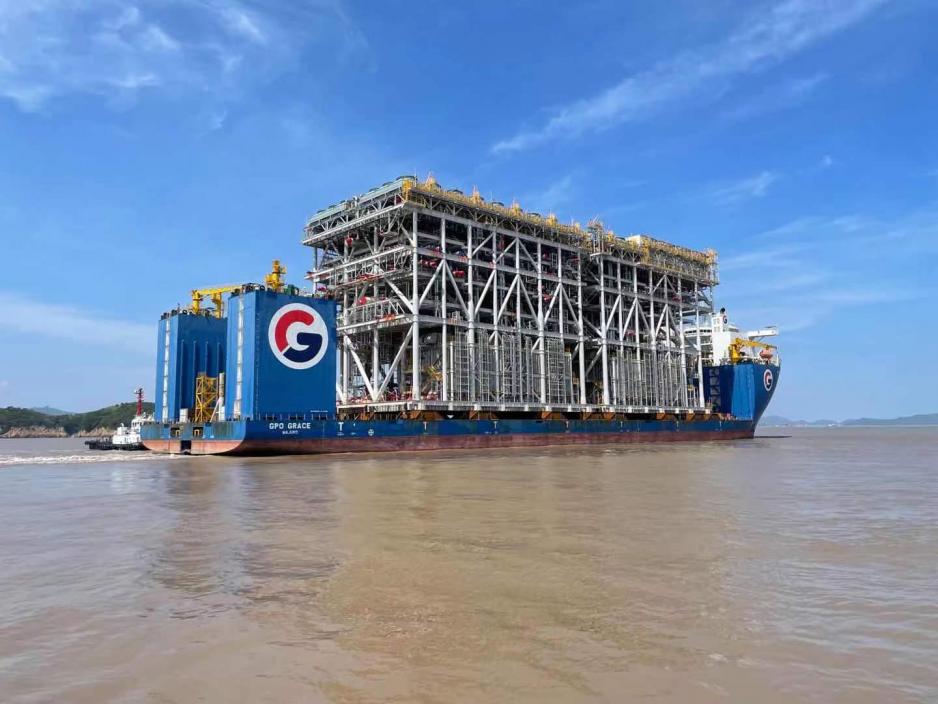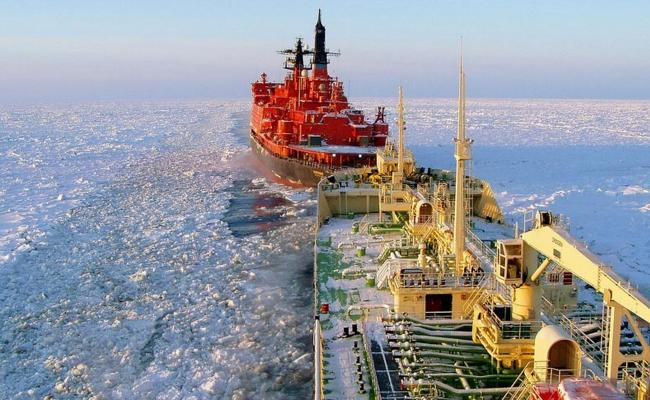Western Cargo Ships Sail Northern Sea Route with Modules for Arctic LNG-2 Project

‘GPO Grace’ departed the port of Ningbo-Zhoushan in China on August 26th with LNG modules for Novatek's Arctic LNG-2 project. (Photo: GPO Heavylift)
"The two heavy-lift vessels sailing the route will contribute to increased awareness and demonstrate that the Northern Sea Route is a viable option", says Oddgeir Danielsen, Regional Director of the Norwegian-Russian Chamber of Commerce.
Two cargo ships owned by GPO Heavylift are currently sailing the Northern Sea Route (NSR) with the mission to carry LNG modules for Novatek's Arctic LNG-2 project. ‘GPO Grace’ departed the port of Ningbo-Zhoushan in China on August 26th and is expected to arrive in Murmansk on September 16. ‘GPO Amethyst’ is sailing from the West to the East, and ‘GPO Grace’ is sailing the opposite way, from China to Murmansk. The two will probably meet in the East Siberian Sea.
What is unusual about these voyages is that the vessels are non-Russian and not standard ice-class ships sailing transit along the NSR.
“This is the first time we use the Northern Sea Route for our vessels. We are very excited about how smooth sailing this will be. It has now been reported that the Northern Sea Route is ice-free, so it will probably not present any problems whatsoever. The route will probably be open until mid-November. We save around 20 to 25 days in transit time compared to the traditional routes via the Suez Canal or via Cape Good Hope. This will reduce our bunker consumption and, consequently, also result in a reduction of emissions.” says Managing Director Dagfinn Thorsen of GPO Heavylift.
This will reduce our bunker consumption, and consequently also result in a reduction in emissions
Russia has high ambitions
The Northern Sea Route is one of Russian President Vladimir Putin's flagship projects and he recently said that the country is aiming for year-round sailing along this shipping lane. Russia is currently investing heavily in infrastructure along the NSR in the Russian Arctic.
Oddgeir Danielsen is the Regional Director of the Norwegian-Russian Chamber of Commerce (NRCC). He says that increased traffic along the route and its being non-Russian vessels may open several new business opportunities.
What is the significance of two Western ships traveling in transit along the NSR?
"Russia has over time had high ambitions for the development of the Northern Sea Route, setting a target on transporting 80 million tonnes along the route by 2024. At the same time, the West has been reluctant to use the route despite the much shorter transit time between Europe and Asia compared to other alternatives. It is also worth noticing that Russia’s Minister for the Development of the Far East and Arctic Aleksey Chekunov recently announced an ambition of year-round sailing along the Northern Sea route within five years, and that a container transport service for the route is being developed", says Danielsen and adds:
"The two heavy-lift vessels sailing the route will thus contribute to increased awareness and demonstrate that the Northern Sea Route is a viable option not only for oil, gas, and bulk transport, but also for other types of cargo. Increased traffic along the route, also with non-Russian vessels, will obviously open several new business opportunities for the shipping industry and stakeholders from which Norway with its geographical proximity could benefit".



